HARD
MHT-CET
IMPORTANT
Earn 100
Tangential acceleration of a particle moving on a circle of radius varies with time as shown in the graph (initial velocity of the particle is zero). Time after which total acceleration of particle makes an angle of with radial acceleration is
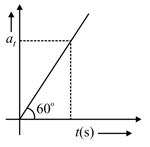
(a)
(b)
(c)
(d)
50% studentsanswered this correctly

Important Questions on Circular Motion
HARD
MHT-CET
IMPORTANT
A small block can move in a straight horizontal line along AB. Flashlights from one side project their shadow on a vertical wall which has a horizontal cross-section as a circle. Find the radial acceleration of the shadow as a function of time.
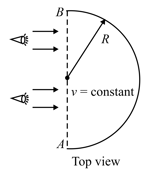
MEDIUM
MHT-CET
IMPORTANT
A bob attached to a string is held horizontal and released. The tension and vertical distance from point of suspension can be represented by

EASY
MHT-CET
IMPORTANT
A ball enters a semicircular tube with velocity v and maintains a constant velocity. Find the average force required to keep the tube stable.
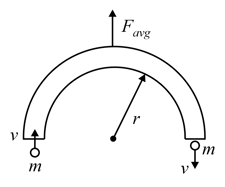
EASY
MHT-CET
IMPORTANT
Consider an object of mass that moves in a circular orbit with constant velocity along the inside of a cone. Assume the wall of the cone to be frictionless. Find the radius of the orbit.
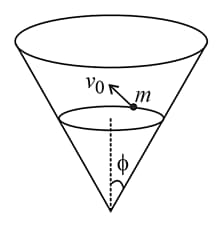
EASY
MHT-CET
IMPORTANT
A bullet is moving horizontally with certain velocity. It pierces two paper discs rotating coaxially with angular speed separated by a distance . If the hole made by bullet on second disc is shifted by an angle with respect to the first, find velocity of bullet.
EASY
MHT-CET
IMPORTANT
Given is the graph for a car wheel, where brakes produce an angular acceleration Which of the following can be the form of graph?

MEDIUM
MHT-CET
IMPORTANT
A cyclist is going on an overbridge with constant speed. The value of frictional force acting on the cycle
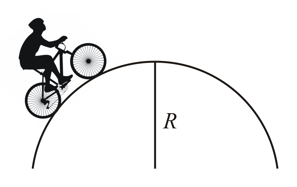
EASY
MHT-CET
IMPORTANT
For the given situation as shown in the graph, the initial angular velocity of the particle is What will be the final angular velocity if the particle follows the given graph?

